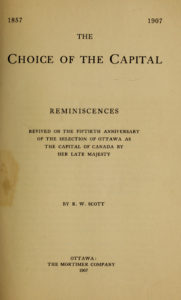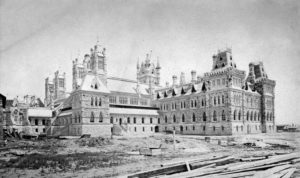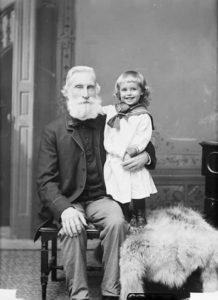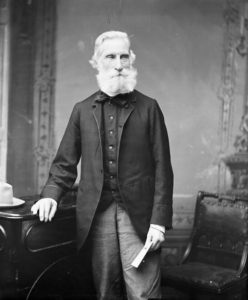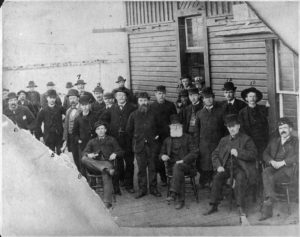Becoming the Capital. Ottawa The Underdog.
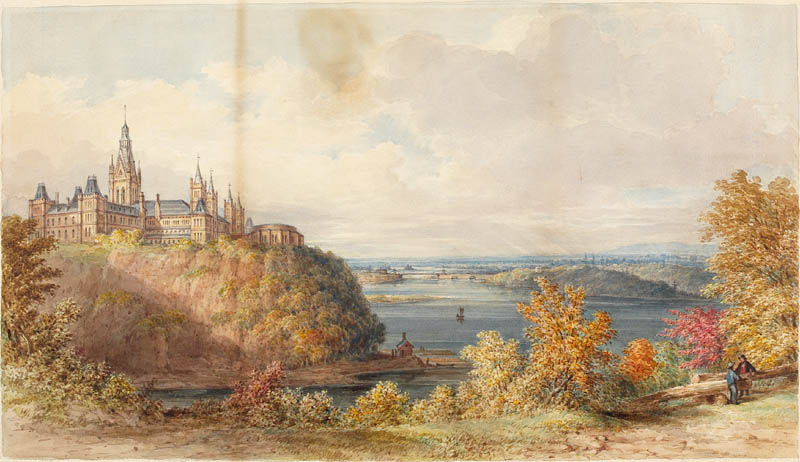
The Path to Ottawa as the Capital of Canada
It is one of the most interesting stories in its political history. It was the underdog to the seat but due to indecision, political upheavals, and the Queen, Ottawa became and celebrates its 160th year as the Capital.
The matter of where the Capital should be located was voted on many times with little agreement and the location did change frequently. Events such as the Parliament being burnt to the ground, riots, and political upheaval caused for new consideration. New votes were taken, disagreements continued, and twice the Province asked for the Queen to make the decision.
Once the Queen made her decision, in favor of Ottawa, the Parliament disagreed and put the matter to a vote once again. The Queen and the Governor General stood firm and reaffirmed the Queen as the final say as to the location with The British North America Act of 1867: “Until the Queen otherwise directs, the Seat of Government of Canada shall be Ottawa.”
Here is a timeline with a few interesting excerpts from The Choice of the Capital by Richard William Scott, a Canadian who was an active politician from about 1854. As a point of trivia, the Capitals of Canada have been Quebec, Kingston, Montreal, Toronto, and Ottawa with Hamilton as the one additional city that was contemplated for the Capital.
‘The writer looks back with much satisfaction to the opportunity given him to bear a small share in the contest for Ottawa’s ascendancy, — having in 1857 drafted the memorial to Her late Majesty Queen Victoria setting forth the reasons that should influence her judgment in favour of Ottawa and, subsequently, as member for the city, having taken part in shaping the policy that was adopted in 1859, in order to secure a reversal of the adverse vote of the Legislative Assembly which, in the session of 1858 by a vote of 64 to 50, had declared that “in the opinion of this House the City of Ottawa ought not to be the permanent seat of Government of this Province,” thus curtly setting aside Her Majesty’s decision.’ – Richard William Scott
The Timeline
Up to 1791 Quebec: The Imperial Act dividing the Province into Upper and Lower Canada
Ceases to be the capital of the Province of Canada. The Queen declares that each province should select their Capital. Quebec remained the capital of Lower Canada while Newark became the capital of Upper Canada but was soon moved to Toronto.
1840: The Imperial Act reuniting Upper and Lower Canada
1841: Kingston becomes the Capital of Canada
1841: Toronto objects
A committee is formed to meet alternatively in Toronto and Quebec with an address to Queen adopted (26 for and 21 against). Arguments were:
• Only those two cities had any just claim to be the Capital
• Western Canada would become more acquainted with the “respective inhabitants”
• William IV, the previous King stated that Upper and Lower Canada should not be united
1842: First request to the Queen to select the Capital
Queen Victoria refuses to make a choice for the Capital unless Parliament would agree to provide the funds to build public buildings.
1842: The Capital as the choice of the Crown
The Committee rebutted that the choice should be that of the Crown. Added that Kingston did not provide adequate buildings or residences for the representatives and was not central to the majority of the population. The Committee agreed unanimously.
1842: More Legislative Votes
Toronto as an alternative. The Committee tried to pass an amendment to the resolution to make Toronto the Capital, the vote was 12 for to 51 against.
Quebec and Montreal as alternatives. An amended was also proposed to move the Capital to Quebec and Montreal. These also did not pass.
Ottawa as an alternative. An amendment was proposed by Mr. Derbishire, representative for Bytown (Ottawa), that Bytown (Ottawa) was preferable to Quebec. This also did not pass (for 6, against 57).
Picking on Kingston again. An amendment was proposed that Kingston does not afford sufficient accommodations for Parliament and during the recess the Legislature should “remove this inconvenience”. This also did not pass (for 21, against 40). Then proposed was that Kingston was not central to population. This did pass (for 40, against 21).
1843: The arguments continues… and a decision is made.
Amendments suggesting that the Capital should be in Montreal. This did not pass (for 29, against 50).
Kingston is suggested as the Capital which did not pass (for 26, against 54).
A motion was put forth to strike out “Kingston” and replace it “within the limits of Upper Canada”. This did not pass (for 27, against 52).
An amendment was proposed again to have Montreal as the Capital which did pass (51 for, 27 against). The Attorney General agreed for Montreal to be the Capital as long as the House provided the funds. This passed (for 55, against 22).
A Side Note: The reported disadvantages of Bytown (Ottawa) to the Crown:
“Of Bytown it states that its inland position, on the boundary river between the late Provinces, and at the mouth of the great military canal of the Rideau, are said to give it a claim to consideration above other places because it would be comparatively safe in case of war and convenient alike for Upper and Lower Canadians. It further states that when the country of the Ottawa comes to be settled, it promises to rise into importance, but that its position on the Provincial boundary makes it inconvenient for both Upper and Lower Canadians; it is in fact out of the way of both; and thus possessing disadvantages which would be equally felt by both divisions of the Province, it would probably unite both in one feeling, and that not in its favour.”
1849: Parliament Rebellion Bills cause riots
The first bill introduced which had no major opposition was passed. It was to grant general amnesty to the Rebellions of Upper and Lower Canada during the 1837 and 1838 rebellion attacks.
The next bill that was introduced was the Rebellion Losses Bill which provided compensation for those who experienced losses to property during the rebellion. It excluded those who were accused of treason during the rebellion or banished to Bermuda by the Crown. “It met with furious opposition”. Upper Canada contended that no one was convicted or banished and that no one should be prevented from receiving compensation. This discontent spread across Canada. The bill passed the Assembly (for 47, against 18) and the Legislative Council (for 20, against 14).
On April 25, 1849, within the power of the constitution, the Governor General (Lord Elgin) agreed to the measure. Riots followed.
The Parliament Building were “wrecked and then burned to the ground”. Lord Elgin was pelted with rotten eggs, stone, and other objects. A month later he was no longer able to attend Parliament. On August 15, additional rioting began. On September 17 (Stony Monday), Reformist and Loyalists (Tories) met at Market Square Bytown (Ottawa) to discuss a reception for Lord Elgin’s visit to consider Ottawa as the Capital. A reception for his visit was met with a violent confrontation between the Loyalists and Reformists, throwing sticks and stones at each other followed by firearms. The opposition was not to having Ottawa as the Capital but merely the visit of Lord Elgin. During the confrontation twelve were wounded and 1 killed. Criminal proceedings followed.
1850: Parliament meets in Toronto due to the political climate for two years which then rotates to Quebec
1852: Parliament meets in Quebec
1856: The vote for the Capital
April 16, Parliament put forth the motion to vote on the new Capital, replacing Quebec. The choices and votes were limited to:
• Toronto (for 71, against 56)
• Quebec (for 64, against 56 = by amendment replaces Ottawa as a choice)
• Montreal (for 65, against 55)
• Ottawa (received the fewest votes = replaced by Quebec as a choice)
• Kingston (for 67, against 54)
• Hamilton (for 70, against 46)
An amendment was proposed and pass to replace “Ottawa” with Quebec as a choice (for 77, against 43).
1856: Funding a Parliament building in Quebec
June 15, a resolution was put forth to grant 55,000 pounds to build a Parliament in Quebec (Bill of Supply). This was met with opposition. The motion to provide 50,000 pounds to Quebec was carried (for 50, against 46). The bill was then introduced into the Legislative Council which introduced another Bill of Supply omitting the 50,000 pounds. Both houses passed this bill.
1857: More voting on the Capital of Canada
A motion was introduced to select the Capital of Canada again. An amendment was introduced stating this was previously decided but the amendment was struck down (for 44, against 68). Apparently it had not been decided! The new vote:
• Montreal (for 39, against 75)
• Ottawa (for 11, against 100)
• Kingston (for 28, against 84)
• Toronto (for 30, against 81)
A vote was then put forth to postpone or defeat the decision (for 61, against 50).
1857: A second plea to the Queen to select the Capital
March 28, a letter was sent to the Queen requesting to use her Prerogative in selecting the Capital.
1857: The Queen accepts the plea
April 17, a letter was sent from Downing Street acknowledging and accepting the request to select the Capital.
1857: The Queen selects Ottawa
On December 31, a letter from Downing Street states that the Queen has selected Ottawa as the capital. You can see this letter at the end of this post.
1858: Confirmation from Ottawa
On April 6th, the resolution from the Municipal Council of Ottawa is read in the House confirming that Ottawa would provide the necessary buildings.
1858: The Parliament disagrees with the Queen
On July 28th, the House put forth to address the Crown in their decision stating that “the City of Ottawa ought not to be the permanent seat of Government of this Province.” The also requested that the Capital should change to Montreal. It passed with 64 for and 50 against. Following was a major division in Parliament. One that could not be reconciled among the members.
1859: The Speech from the Governor General of the Province of Canada
January 29th, Edmund Walker Head, Governor General of the Province of Canada, as the Speaker in Command, opened the session with this following speech:
“It is my duty, on the present occasion, to call your attention to the question of the seat of government of Canada.
The Legislature of Canada, having resolved that a fixed seat of government should be selected, solicited our Gracious Queen, by an Address of either House, to exercise her prerogative in making such selection.
An Act, moreover, was passed, adopting beforehand the decision of Her Majesty, and appropriating the necessary funds.
This Act of the Canadian Parliament and the decision of the Queen are binding on the Executive Government of the Province, and it will be their duty to carry out the understanding which existed at the time when the reference was made, by which the Government will be transferred to Quebec for a fixed period, until the necessary arrangements shall have been completed.
The correspondence with Her Majesty’s Government will be laid before you, and I cannot doubt that you will recognize a selection made by Her Majesty at your own request, and that you will duly acknowledge Her gracious compliance with the Addresses which you yourselves caused to be presented to Her.”
An amendment was then proposed to replace the last paragraph of the speech that read as follows:
“The fundamental principle of the representative system, and one of the most important advantages resulting from it, is the right of the majority to have their views and opinions prevail in the administration of the country; and it is the duty of this House to repel any attempt which might endanger a principle which for centuries has preserved, in a wise measure of progress, the franchises and liberties of England. That, in declaring on the 28th July last, that in the opinion of this House the City of Ottawa ought not to be the permanent seat of government of this Province/this House, without intending any want of respect to the Sovereign expressed its views and opinions on the subject of the seat of government in the ordinary and constitutional exercise of its privileges.”
1859: The debates ends….
February 10, the debate for the amendment ends with 59 for and 64 against.
1860: The corner stone of the Parliament is laid by the King, Prince of Wales
1866: The first session of Parliament is held in Ottawa
1867: The British North America Act
In the act (Executive Power) the rights of the Queen to decide the seat of the government were affirmed: “Until the Queen otherwise directs, the Seat of Government of Canada shall be Ottawa.”
The Influence: Lady Head, wife of Edmund Walker Head, Governor General
“It is, however, not improbable that we had the friendly aid of Lady Head, wife of the then Governor General. She and His Excellency took a trip to England in that year having previously paid a visit to Ottawa, where they were entertained at a luncheon under canvas on Major’s Hill, near the site of the chateau built by Colonel By. The writer had the honour of presiding and availed himself of the opportunity to point out to Lady Head the attractive surroundings — Barrack hill in the foreground clothed in beautiful foliage, and the sloping green bank on the opposite side of the river where the little frame shantymen’s chapel stood surrounded by trees. The day was bright with a clear atmosphere, affording a fine view of the Chaudiere Falls before the lumber piles had marred the beauty of the landscape. Lady Head was so impressed with the picturesque scenery that she made a sketch of it. Being a bright clever woman and a friend of her late Majesty, the writer has always entertained the belief that the sketch was shown to the Queen, who would naturally have enquired from her as to the eligibility of the city for the seat of government. Though the official announcement that Her Majesty had selected Ottawa was not received till the middle of January, 1858, a private letter from a member of Her Majesty’s Household reached Ottawa some weeks previously stating positively that Ottawa was the Queen’s choice.” – Richard William Scott
Letter: The Queen’s Selection of Ottawa
No. 60. Downing Street,
31 December, 1857.
Sir:—
By my despatch of the 17th April last, I informed you that Her Majesty had been graciously pleased to comply with the prayer of the address presented to Her by the Legislative Council and Assembly of Canada namely, that she would exercise the royal prerogative by the selection of some place for the permanent seat of Government in Canada.
This question has now been considered by Her Majesty and by Her Government with that attention which its great importance demanded. The statements and arguments contained in the various Memorials laid before them in consequence of Your invitation to the Mayors of the several cities chiefly interested, have been fully weighed.
I am commanded by the Queen to inform you that in the judgment of Her Majesty the City of Ottawa combines more advantages than any other place in Canada for the permanent seat of the future Government of the Province, and is selected by Her Majesty accordingly.
I have, &c,
(Sgd.) H. LABOUCHERE.
Governor,
The Right Hon. Sir E. Head, Bt., Canada.

